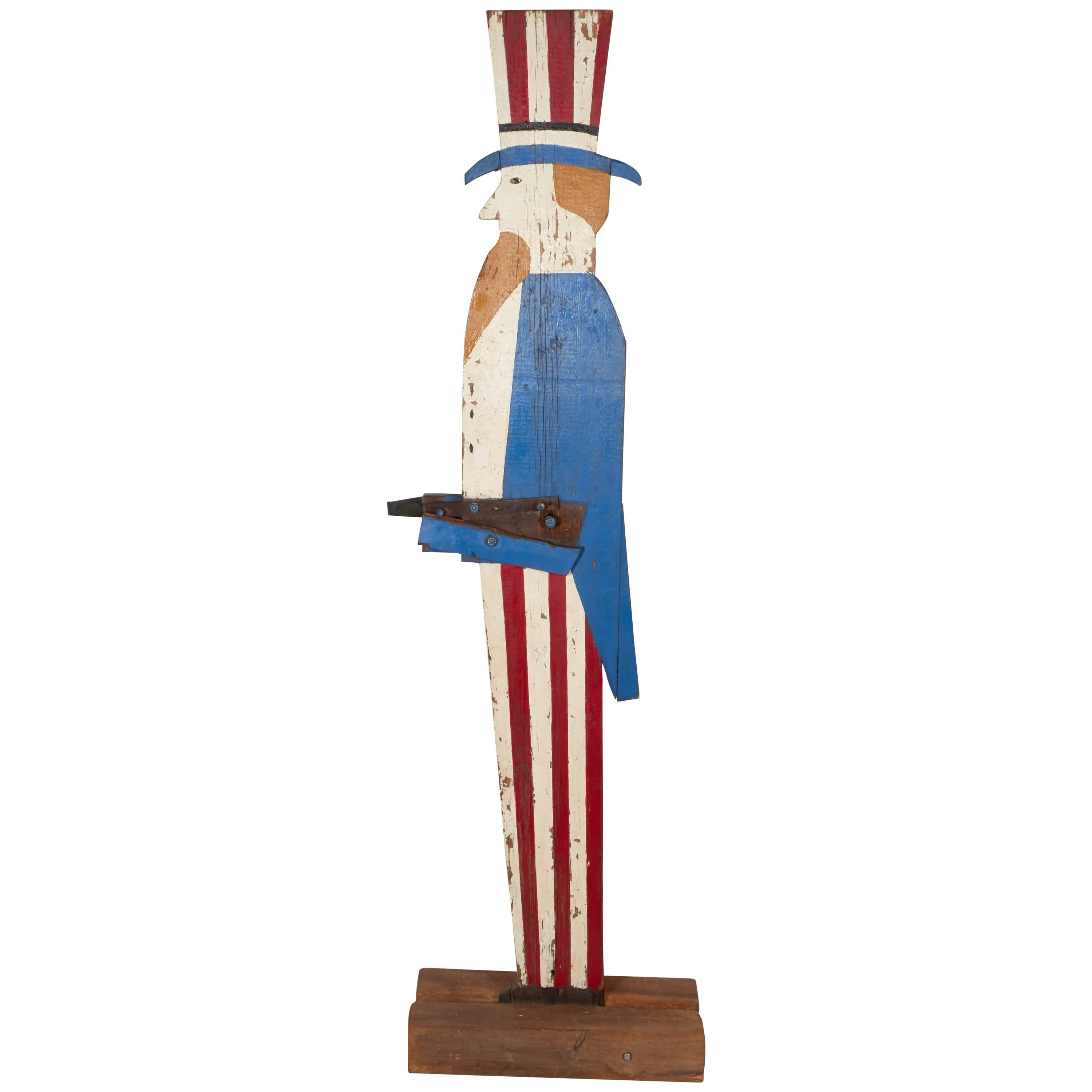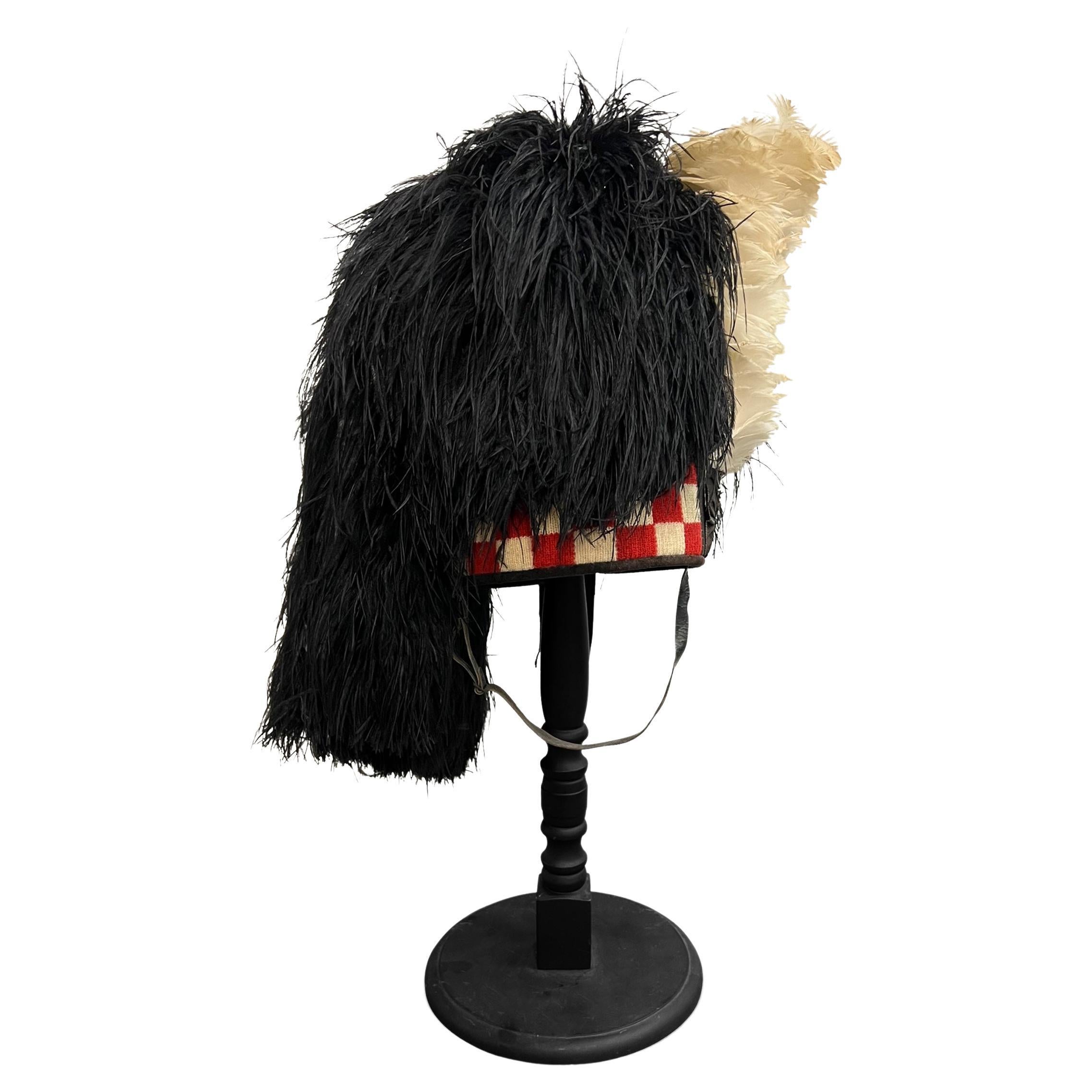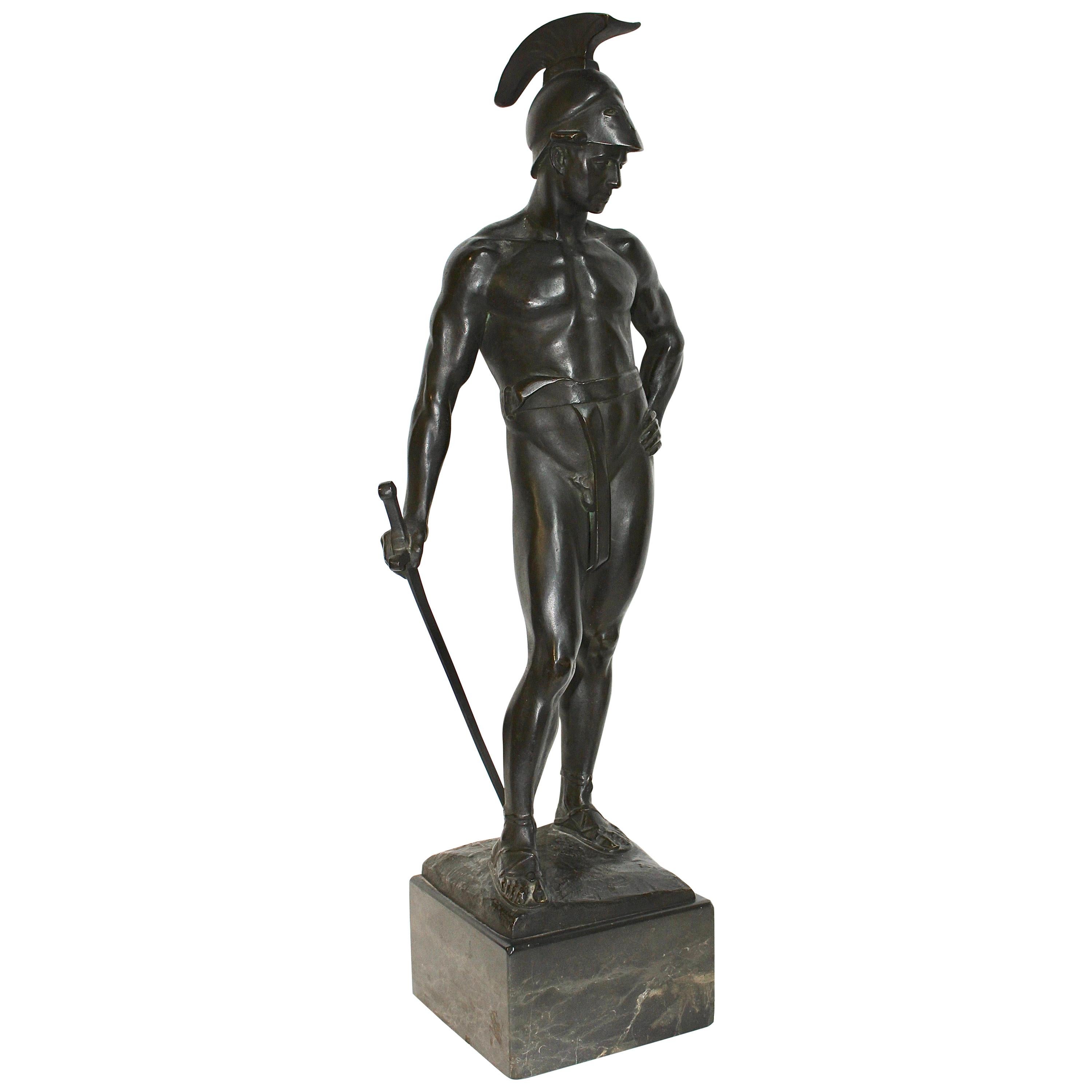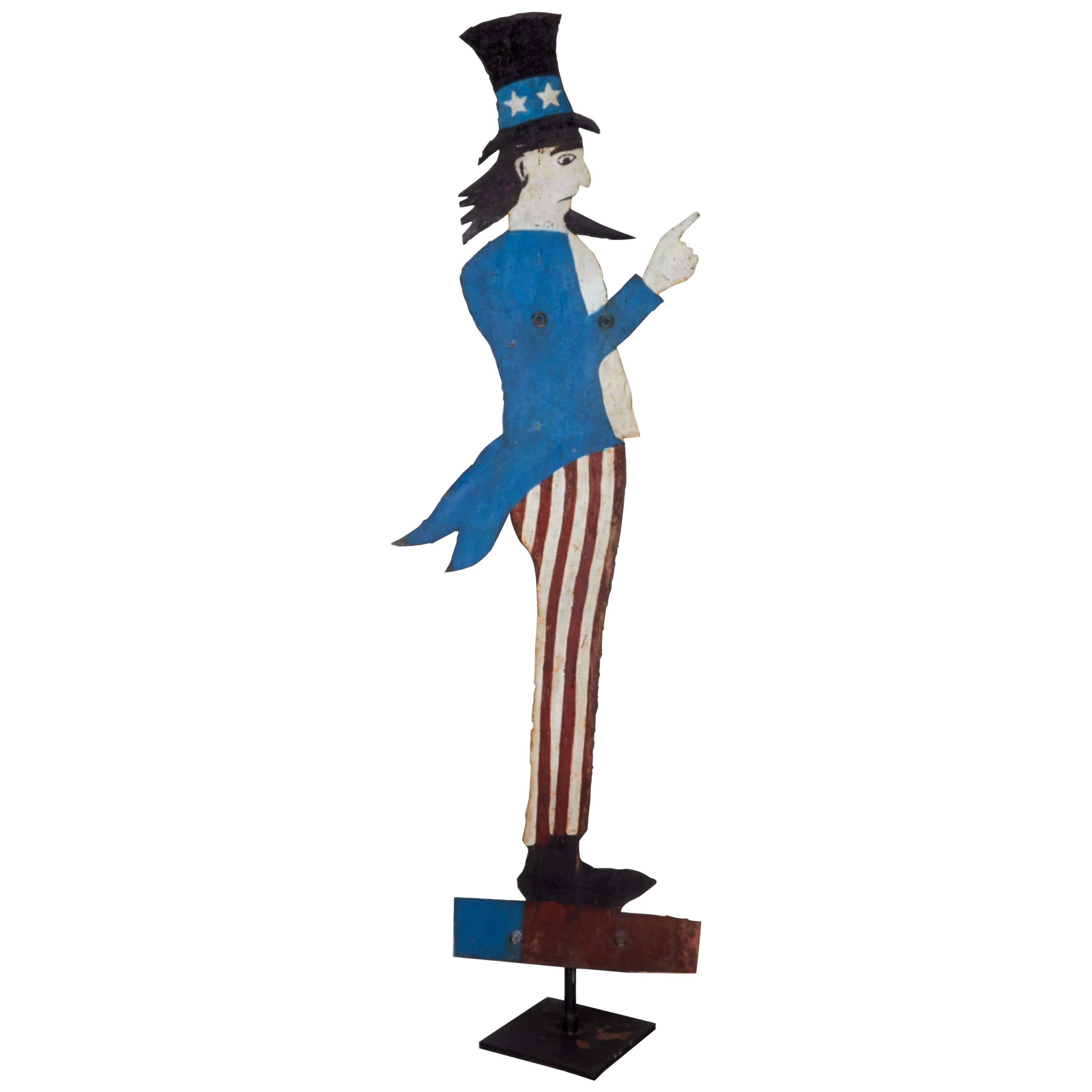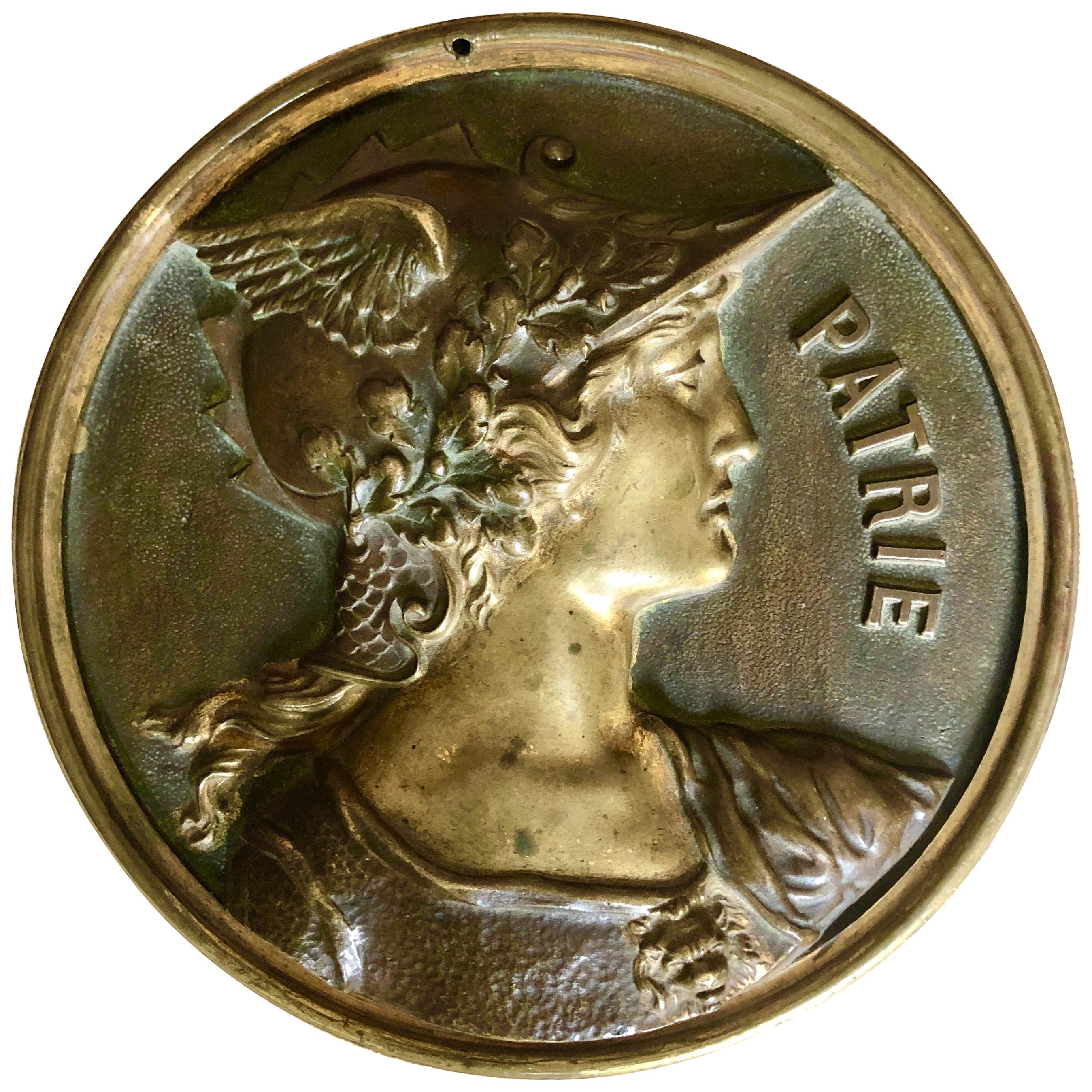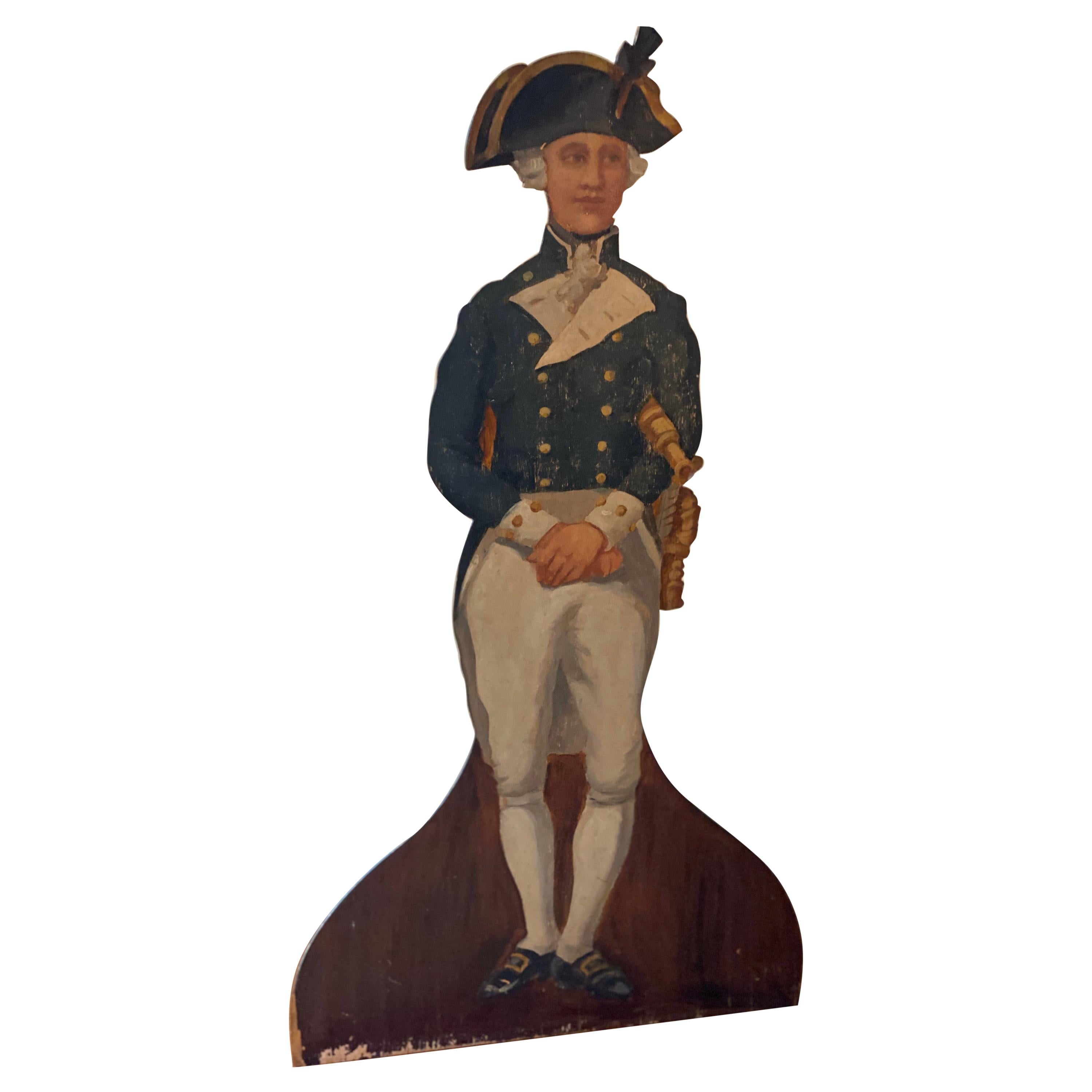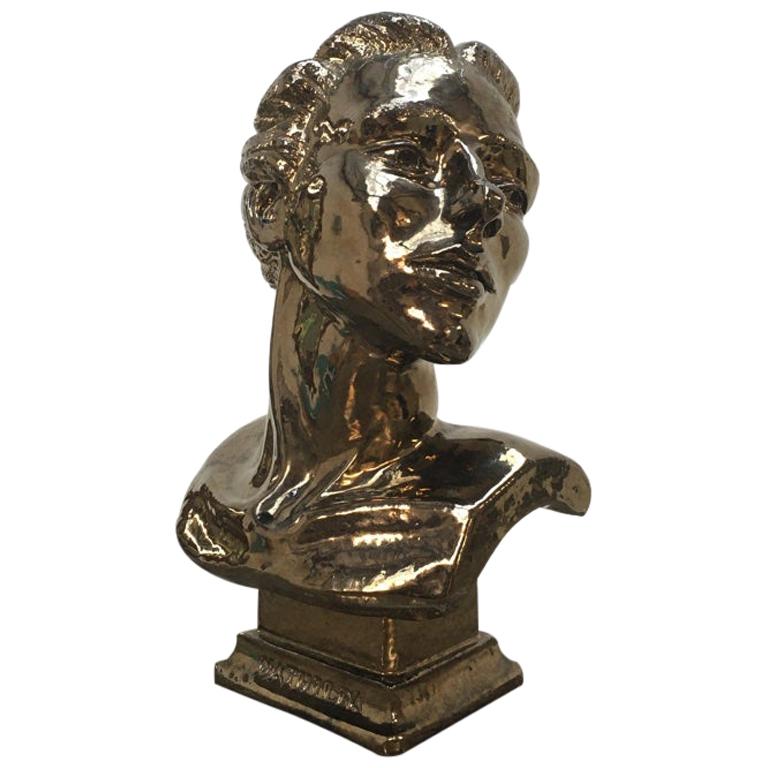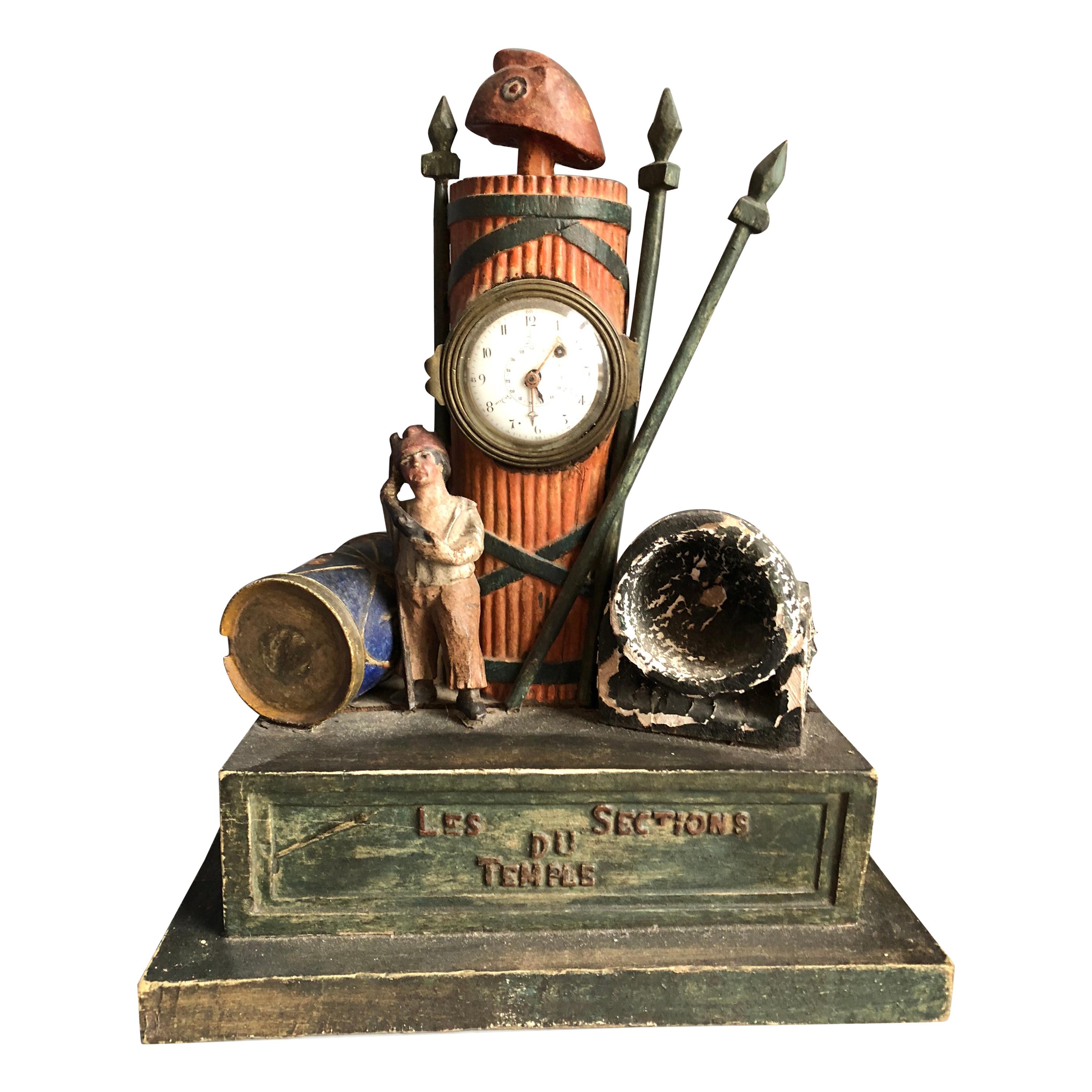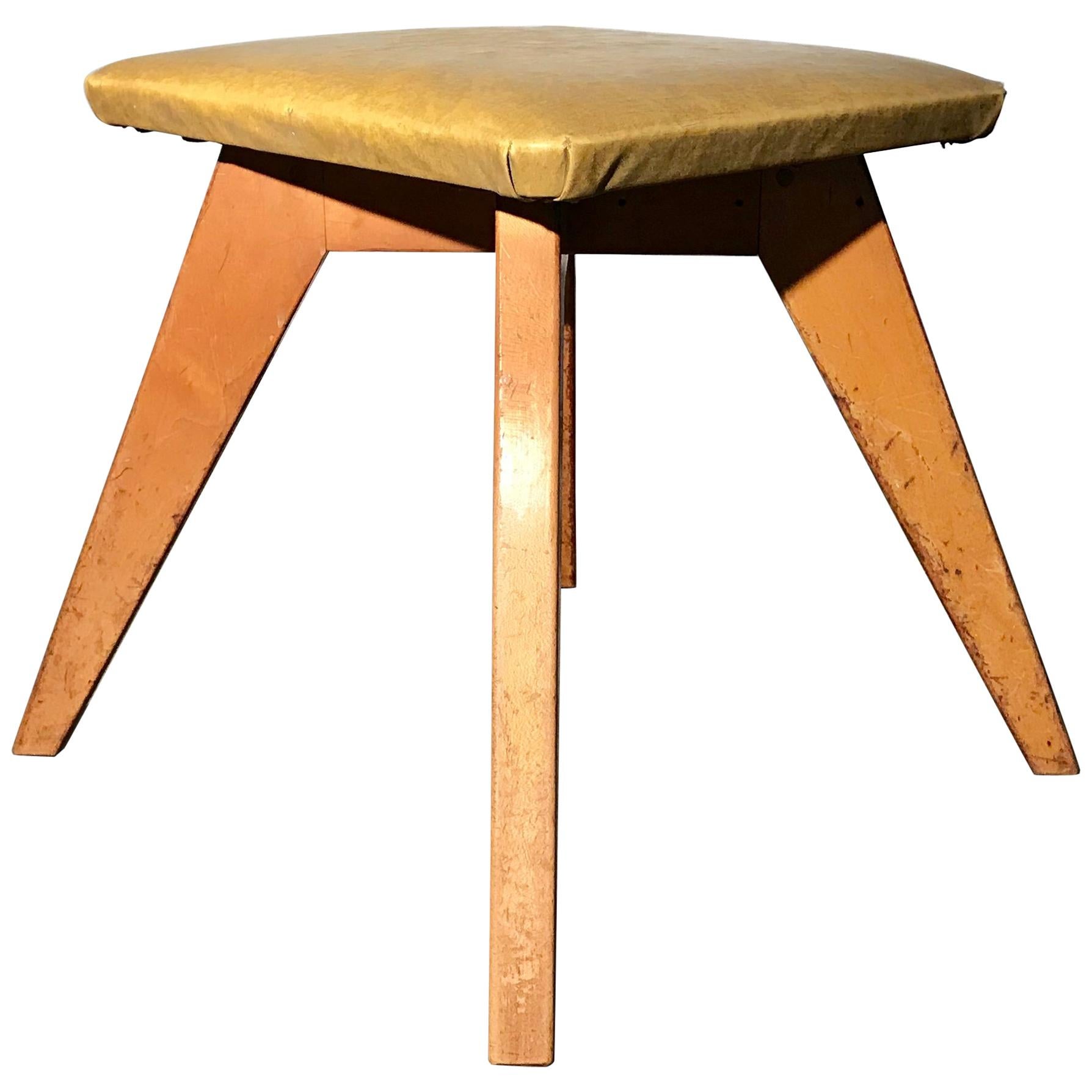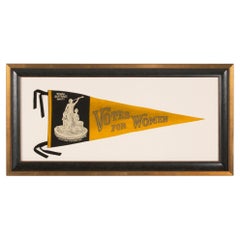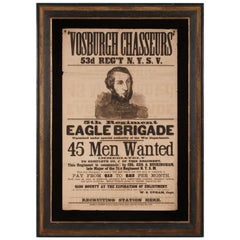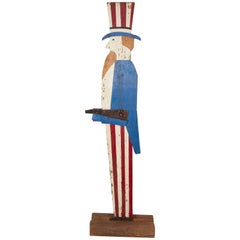
VERY EARLY NEW YORK STATE MILITIA DRUM
View Similar Items
Want more images or videos?
Request additional images or videos from the seller
1 of 6
VERY EARLY NEW YORK STATE MILITIA DRUM
About the Item
Here are the photos of the New York State drum. This is a great early one--as early as any I see in the marketplace. It was probably manufactured sometime between the War of 1812 and the Mexican American War (1846-48), though it could have potentially been carried into the Civil War (1861-65) by the existing militia unit to whom it belonged. The primitive eagle has great folk style and is indicative of pre-Civil War imagery. When standing on this half globe it represents New York State. This is early symbolism and allows easy attribution of the drum to a New York State militia unit. The eagle may not be elaborate, but it has strong folk qualities and canted to one side, it speaks of a time approaching 200 years ago, when America was a much different place and military forces were primarily comprised of unorganized volunteer men. The globe is shaded with blue gradiating toward white and the whimsical yellow crescents, accompanied by 8-pointed stars, adds a great deal to the overall presentation.
- Dimensions:Height: 16 in (40.64 cm)Diameter: 13.5 in (34.29 cm)
- Place of Origin:
- Period:
- Date of Manufacture:1812-1848
- Condition:Construction & Condition: The drum is constructed of an ash shell with white oak rims. Painted with an oxblood red stain, the shell is fastened with decorative brass tacks and a row of tiny, tightly spaced, cut copper tacks. The hemp rope is early but.
- Seller Location:York County, PA
- Reference Number:Seller: pat-1121stDibs: U080721849763
About the Seller
5.0
Recognized Seller
These prestigious sellers are industry leaders and represent the highest echelon for item quality and design.
Established in 1991
1stDibs seller since 2008
61 sales on 1stDibs
Typical response time: 9 hours
More From This SellerView All
- Carrie Chapman's "Woman Suffrage Party" Pennant, New York City, ca 1912-1920Located in York County, PA"VOTES FOR WOMEN" PENNANT WITH AN IMAGE OF A 1911 STATUETTE CALLED "SUFFRAGIST" BY ELLA BUCHANNAN, MADE FOR CARRIE CHAPMAN CATT'S "WOMAN SUFFRAGE PARTY" OF NEW YORK CITY, CA 1912-20 ...Category
Mid-20th Century American Political and Patriotic Memorabilia
MaterialsCotton
- Large Civil War recruitment Broadside for the 53rd New York Volunteer InfantryLocated in York County, PALARGE CIVIL WAR RECRUITMENT BROADSIDE FOR THE 53RD NEW YORK VOLUNTEER INFANTRY, 5th REGIMENT, "EAGLE BRIGADE," WITH AN ATTRACTIVE AND COMPELLING ...Category
Antique 1860s American Political and Patriotic Memorabilia
MaterialsPaper
- "Visit to Camp" Rare Card Game by McLaughlin Brother of New York, Ca 1871Located in York County, PA“Visit To Camp,” an extraordinarily rare card game by mclaughlin brothers of new york, circa 1871. This extremely rare card game, designed with Civil War context, was made by McLoughlin Brothers in New York City. The set includes 12 (complete) chromolithographed, character playing cards, and 68 (out of 72) object cards, with various accoutrements. All of the above are housed in a wooden storage box with a slide lid and a chromolithographed, paper label. Played in an ad-lib, story-telling format, the characters include the Colonel, the Captain, the Zouave soldier with red pantaloons, the Rifleman, the Artilleryman, the Riding Master, the Musician, the Ferrier, the Surgeon, the Sapper (engineer), the Sutler (cook), and the Vi Vandeer (a woman who takes care of the troops). Each character was originally linked to 6 objects, which were to be produced by players on demand during a spoken reading of the game’s convoluted story-line. There are actually 69 cards included here, one of which is an object card for “the Chinaman.” Since the card matches the style exactly in printing, shape, and scale, and since there was no Chinaman in this game, I presume that the card must have once accompanied another McLaughlin ad-lib deck. The instructions (reproduced, in scale) list 13 possible players, with the 13th acting as narrator. I could locate only 3 other copies of this extremely rare game, all of which included 12 cards. McLoughlin Brothers is said to have pioneered the systematic use of color printing technologies in children’s books. The publishing firm opened in 1820 and was active until 1920, when it was sold to Milton Bradley. During the early years, the product line included toys in addition to books, among which were games, blocks, and paper dolls. Artwork from famous illustrators such as Thomas Nast, William Momberger, Ida Waugh” (Laura Wasowicz), Justin Howard, and Palmer Cox...Category
Antique 1870s American Political and Patriotic Memorabilia
MaterialsPaper
- Ohio State Parade Flag with a Civil War Veterans OverprintLocated in York County, PAOHIO STATE FLAG WITH CIVIL WAR VETERANS' OVERPRINT FROM THE GRAND ARMY OF THE REPUBLIC POST IN COLUMBUS, MADE IN MOURNING OF THE 1925 PASSING OF NATIONAL G.A.R. COMMANDER IN CHIEF DANIEL M. HALL, WHO ALSO SERVED AS COMMANDER OF THE OHIO DEPARTMENT OF THE G.A.R., AS WELL AS THE LOCAL CHAPTER Flag of the State of Ohio, printed on oilcloth-like cotton, affixed to its original wooden staff. Made for Civil War veteran's use, the flag bears a stamped overprint in the striped field that consists of an open wreath of laurel branches, inside which is the following text: “GAR [Grand Army of the Republic] Post, Dan Hall, Columbus, OH”. Born on October 20th, 1842, Daniel M. Hall enlisted with the Union Army as a Private at the age of 18 on August 25th, 1861. On October 8th of that year he mustered into the Co. H of the 2nd Ohio Cavalry. Discharged for disability on June 28th, 1862, he reenlisted approximately 17 months later, on November 11th, 1863, and mustered into Co. F of the 12th Ohio Cavalry at Camp Cleveland. He was at some point promoted to the rank of Sergeant, and, on February 21st, 1864, to the rank of Corporal. He mustered out at Nashville on November 14th, 1865. Hall mustered into the Hamlin Post of the Ohio G.A.R. on May 23rd, 1883. He would go on to serve not only as Commander of the Dept. of Ohio for the organization, but as National Commander of the entire Grand Army of the Republic. The Grand Army of the Republic was the primary veterans association for Union Civil War soldiers. Founded in 1866, its members dressed up in Civil War uniforms, attended parades and reunions, and the organization was somewhat more fraternal in nature than today’s VFW or American Foreign Legion. Flags overprinted for the purpose of advertising are a specialized form in American flag collecting. A flag with a basic G.A.R. overprint is the most common type. This might be accompanied by a post number and a date. More elaborate the overprints are more highly desired, such as this one, which is the only variation I know of that honors a particular person who was not the namesake of the chapter itself. It is of interest to note that a sister variety of 48 star parade flag is known, printed on the same fabric, that bears the same overprint, accompanied by the words: “We Mourn Our Comrade." From the additional text on the 48 star variety, one can extrapolate that the flags were made to mourn the passing of this important leader of Civil War veterans on October 19th, 1925, just one day before his 83rd birthday. The State Flag of Ohio was designed in 1901 by Cleveland architect John Eisenmann, who designed the Ohio building for the state's exhibition at the Pan American Exposition World's Fair in Buffalo, New York. It was officially adopted by the Ohio legislature on May 19th, 1902. It's elements are centered on a red disc, set against a circular white ground that forms a letter "O." This simultaneously represents a buckeye, the fruit of the state tree and an iconic Ohio symbol. The flag's 5 stripes are said to represent the state's waterways and roads, while the triangular shape of the union is said to illustrate hills and valleys. The presentation of 13 stars along the hoist end, arranged in a semi-circular medallion with two off-set stars above and below, reflects the original 13 colonies. The diamond of stars, towards the fly end. bring the overall count to 17 to reflect Ohio's admission. When the design was adopted by the state legislature, the position of these stars was changed slightly, moving them further around the circle to form a wreath. Flag expert Whitney Smith, who coined the term Vexillology in the late 1950's (the accepted term for the study of flags), pointed out that the format of the flag itself was reminiscent of Civil War cavalry guidons, carried by Ohio regiments throughout the state. These were of swallowtail form, though with 13 stripes, all horizontal and 90 degrees to the hoist. Most often these had circular star patterns around an open center, which makes them even more similar to the Ohio flag...Category
Vintage 1920s American Political and Patriotic Memorabilia
MaterialsCotton
- Colorado State Flag, Made of Silk, Ca 1911-1920Located in York County, PACOLORADO STATE FLAG OF EXCEPTIONAL QUALITY, MADE OF SILK, CIRCA 1911-1920’s, EXTRAORDINARILY RARE IN THIS PERIOD AND THE EARLIEST EXAMPLE THAT I HAVE EVER ENCOUNTERED Early state flags are few and far between. While I am asked for them constantly, most states did not actually have official flags until the 20th century. On May 6th, 1911, Colorado became among the last to adopt a design. The project of doing so was spearheaded by the Denver Chapter of the Daughters of the American Revolution. The bill was introduced by Senator W.H. Sharply and adopted by the Eighteenth General Assembly. The artwork was the product of A.C. [Andrew Carlisle] Carson, President of the Ohio Society of Colorado. The meanings behind the elements in the design are as follows: The large letter "C" stands for Colorado and simultaneously for the Centennial State (Colorado entered the Union in 1876, the year in which our nation celebrated its 100th anniversary of independence), as well as the Columbine State (reflecting the state flower). The red color is included due to the fact that the word Colorado translates to scarlet or red in Spanish. The circle represents the sun, while the gold color symbolizes all-the-year sunshine, Colorado’s status as the greatest gold state, and one Columbine color. It was also included so that the Colorado state flag would have one more color than the U.S. flag. The color white reflects Colorado’s status as the greatest silver state, its eternal mountain snow, and one Columbine color. Lastly, the shade of Yale blue symbolizes all-the-year blue sky and one Columbine Color. Members of the D.A.R. were proud to note that this was also their color. Made sometime between the initial year of the adoption of this design and the 1920’s, this particular flag is the earliest Colorado example that I have ever encountered. The blue and white bars, red “C,” and golden circle are a’’ made of silk taffeta. This was a costly fabric, reserved for the best material a flag-maker produced. The flag is constructed in the manner of a battle flag, to be carried on foot. Squarish in its overall profile, silk was the fabric of choice for flags employed in this function, due to the fact that it was light weight, and thus practical for hand-carrying, while simultaneously formal in appearance, appropriate for the sort of ceremonial use that military presentation often demands. The style of the hoist is also typical for field or parade use. Here the fabric was rolled over to form an open sleeve, through which a wooden staff could be inserted. The sleeve is lined on the interior with black cotton. Leather tabs, at the top and bottom, fit over metal posts on the staff, designed to accept them, to fix the flag in its proper position. The bars were pieced and joined with lineal machine stitching. The hoist and fly ends were finished and hemmed by the same method. The devices are double-appliquéd (applied to both sides) with a machine buttonhole / blanket stitch. Though machines that produced buttonholes were, remarkably, available alongside the earliest standard machines, in the 1850’s and 60’s, the use of this sort of stitch in a running format, for appliqué work, remained highly unusual, even as late as the first half of the twentieth century, probably because it used a ton of thread when compared to the zigzag or satin stitch. It could be expected to appear more often in the hands of a maker of very fine flags, that employed embroidery machines and commissioned custom, fancy work of all sorts. Though unsigned—in no way uncommon in early examples, which were seldom signed—that is precisely the sort of firm that produced the Colorado flag...Category
Early 20th Century American Political and Patriotic Memorabilia
MaterialsSilk
Price Upon Request - Indiana State Flag, with Gold Fringe ca 1930-1955Located in York County, PAIndiana State Flag With Square-like Proportions, An Offset Device, And Gold Fringe, Circa 1930-1955: Despite the fact that most of the United States joined the Union during the 18...Category
20th Century American Political and Patriotic Memorabilia
MaterialsCotton
Price Upon Request
You May Also Like
- Very Tall Wooden Uncle Sam Flag Holder with Old PaintLocated in New York, NYA nicely carved, brightly painted figure of Uncle Sam mounted on two wooden blocks. This large piece, painted on both sides, stands at more than six feet tall. A Classic Folk Art pie...Category
Vintage 1960s American Political and Patriotic Memorabilia
MaterialsWood
- Early 20th Century Scottish Bagpiper's Bonnet on StandLocated in Chicago, ILA playful yet strong early 20th century Scottish bagpiper's bonnet with a woven wool checkerboard headband and decorated with a large black ostrich feather plume and a white feather hackle, mounted on a turned wood stand.Category
Early 20th Century Scottish Mounted Objects
MaterialsWool, Feathers
- Large, Decorative Bronze Sculpture of a Spartan Warrior with Sword, Greco RomanBy Victor Heinrich SeifertLocated in Berlin, DELarge and decorative bronze sculpture of a Spartan warrior. By Professor Victor Heinrich Seifert. Signed. Excellent masterpiece. On marble base.Category
Antique 19th Century Austrian Figurative Sculptures
MaterialsBronze
$7,425 Sale Price20% OffFree Shipping - Old Die Cut Steel Revolving Uncle Sam with Original PaintLocated in New York, NYAn almost six foot tall die cut steel figure of Uncle Sam with original paint on a stand that allows it to fully revolve. A great image with striking facial fe...Category
Vintage 1960s American Political and Patriotic Memorabilia
MaterialsSteel
- 20th Century Bronze Patine Plaque Portrait PatrieLocated in Sofia, BGMedallion in bronze Patrie. The relief portrait has beautiful slightly brown patina. France, circa 1905Category
Early 20th Century French Political and Patriotic Memorabilia
MaterialsBronze
- English Painted Wood Dummy Board Depicting a Royal Navy LieutenantLocated in Southampton, NYEnglish painted wood dummy board depicting a royal navy lieutenant. Inscribed 'Made in England' on the reverse. Measures: 41" high x 21" wide x 9" deep ...Category
Antique Late 19th Century English Figurative Sculptures
MaterialsWood
$950 Sale Price56% Off
